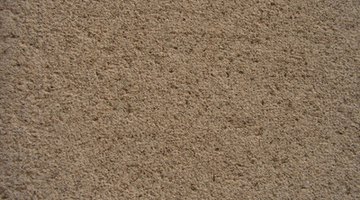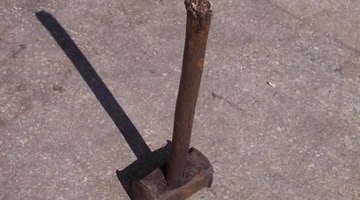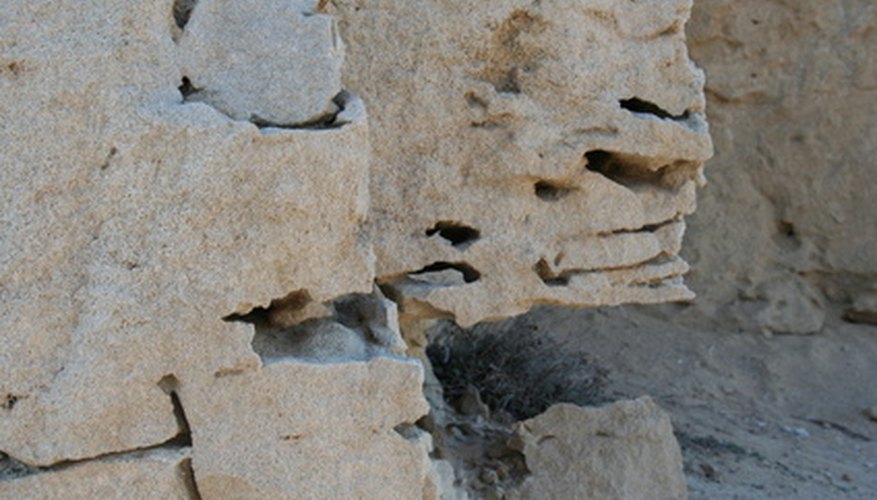Sandstone is a sedimentary rock made with grains of quartz and feldspar. Sandstone has long been prized as a building material both for its strength and durability as well as its inherent beauty and unique colouring. Reconstituted sandstone is a construction material made by crushing recycled and broken sandstone into a fine gravel or powder substance which is then combined with a concrete bonding agent and cast to create everything from ornamental stones to siding for homes and businesses. Reconstituted sandstone products are readily available from commercial suppliers, but do-it-yourselfers can also create reconstituted sandstone blocks for use in building projects.
- Sandstone is a sedimentary rock made with grains of quartz and feldspar.
- Reconstituted sandstone is a construction material made by crushing recycled and broken sandstone into a fine gravel or powder substance which is then combined with a concrete bonding agent and cast to create everything from ornamental stones to siding for homes and businesses.

Purchase a load of reconstituted sandstone from a local building supply company in your area, or look through your local business directory to see if you can locate a specialised sandstone dealer. Some sandstone providers deal in crushed sandstone, whole sandstone or fine sandstone powder like cement. Call local recyclers of building materials to inquire whether they may have access to any recycled sandstone from leftover building materials or demolition projects. The Internet is also a valuable resource in located suppliers of sandstone.

Crush any large pieces of sandstone into small, manageable pieces which can be mixed and poured into the mould. Set the sandstone chunks onto the ground or on a solid surface such as a wood chopping block or level tree stump. Hit the sandstone pieces with a heavy sledgehammer to break larger sections into smaller pieces. Continue to pound the sandstone until all the pieces are ground down to the size you desire. Reconstituted sandstone blocks can be made effectively with finely ground sandstone power, or you can make blocks with 1 to 2 inch chunks of sandstone permeating throughout.
- Crush any large pieces of sandstone into small, manageable pieces which can be mixed and poured into the mould.

Mix the concrete bonding agent with water in a large mixing container. If you are using a finely ground sandstone power, you may be able to combine the sandstone with water to create a malleable sandstone paste which can be formed into the block mould. For lasting durability and to form a solid bond between various sizes of sandstone pieces, prepare the concrete solution according to the package directions and mix in the sandstone material. Add more water in small increments if the solution becomes too thick and difficult to combine.

Pour the sandstone and concrete mix into your sandstone mould. Fill the entire mould to the top edge and gently shake the mould to help the mixture settle and remove air bubbles. Scrape the top of the mixture with a flat trowel so it is smooth and level. Allow the mixture to cure in a dry warm dry spot until the block can be removed from the mould.
